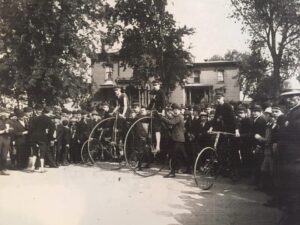Help US Publish the Minneapolis book!

U.S. cities today are known more for cars and highways than for bicycles. But that wasn’t always the case. The cold northern city of Minneapolis was a top American cycling city during the 1890s as it is today.
The Minneapolis Experience, the first volume to explore a city from the Americas, presents a stark alternative to histories of cycling in European cities. Ridden first by the city’s wealthy elite, by the early 1900s, bicycles provided daily utility for workers whose jobs required them to navigate streets. By the 1920s, adult cycling was already declining, as it became invaluable for another group: kids.
Cycling is assumed to have disappeared between the early cycling boom of the 1890s and the 1970s. In Minneapolis, the sole group that kept cycling alive during the 1950s and 1960s was kids. As planners and policymakers began paying attention to cycling starting in the 1970s, they did so in a city transformed by highways whose development reflected car use and racial segregation. Bicycles enabled a growing Black population, and other residents of color, to navigate the city at a time when official interest prioritized middle-class recreation. When urban cycling finally became a policy priority in the 2000s, it was as sustainable mobility, spurring investment in infrastructure, but also exposing racial frictions.

As in cycling cities around the world, bike booms in Minneapolis track alongside periods of white, upper-class interests in cycling. But people never stopped riding. This book presents Minneapolis as sometimes exceptional among U.S. cities, other times typical, unravelling a novel history of cycling, based around the five factors of Cycling Cities.
Help US Publish the Minneapolis book in 2025!
Research team: Peter Bird is a former urban/bicycle planner from the U.S., currently a PhD researcher at the Eindhoven University of Technology, Department of Industrial Engineering and Innovation Sciences; Technology, Innovation and Society Group. His dissertation focuses on mobilizing historical understandings of cycling change to empower practicing planners today.